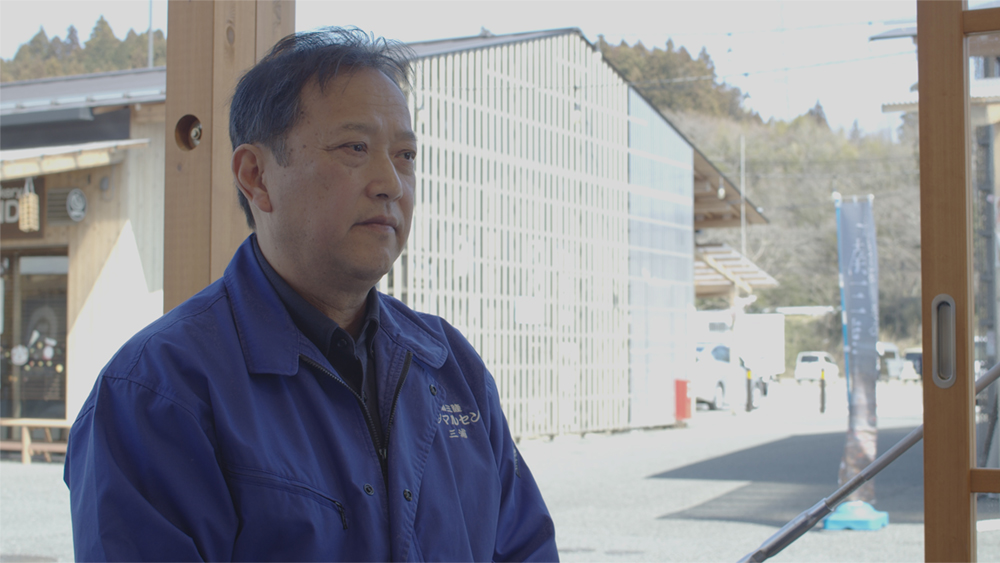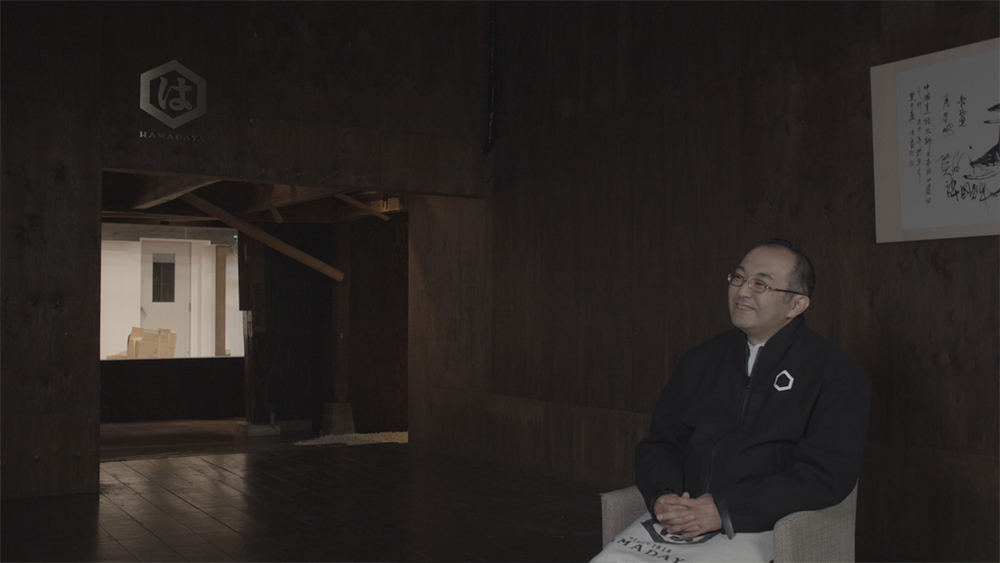Interviews on Post-Disaster Restoration and Architecture
For this exhibition, interviews were carried out with clients, the main users and others with close connections to buildings designed by Kuma Kengo.
These interviews were conducted from a point of view that attaches importance to oral history. In other words, the aim was not merely to conduct interviews, but to position the invisible memories of the speakers in a historical context while converting them into visible records. Here, “history” refers to the personal history of Kuma Kengo the architect, as well as the history of contemporary Japanese architecture in which he is actively involved. In addition, because the interviews were limited to buildings Kuma designed in disaster areas, it also refers to local history.
The oral history method itself is already deemed important in institutions that present, research or collect architecture. Unfortunately, in most cases the subjects of the oral history work conducted by these institutions are limited to architects, architectural historians, architecture critics and others involved in actually designing or evaluating buildings. In other words, so-called users, such as clients, clients’ families or managers, are not included among the main subjects.
Why is it that we almost never hear the voices of clients or users? A feature of architecture is that, with the exception of an architect’s own residence, in order for something to be created there needs to be a client. Naturally, in most cases the will of these people is reflected in the design. As well, the people who maintain a building after its completion are almost always people other than the architect. In fact, from the standpoint of respecting the original—a standpoint commonly adopted by people involved with artworks—things added after completion, other than that by the original architect, should probably be avoided as “noise.” However, as Kuma Kengo says in an interview for this exhibition, the fact that “noise” is added is not because people are dissatisfied with a building. In fact, in some cases it is because they like it and therefore want to improve it. “Architecture” should probably be assessed on the basis of such changed appearances, including the processes behind them.
We tend to think of architects as all-powerful people. And the format of an exhibition devoted to a single architect is highly likely to reinforce this perception. Precisely because of this, with this exhibition an effort was made to go out and interview clients. Of course, there is no guarantee that everything they said is “true.” Because time has passed since their private exchanges with Kuma or the staff at his office, there is also the possibility that editing has occurred due to memory. However, in a similar way, it is probably doubtful that everything architects say is the “truth” or that they can escape the same kind of editing due to memory.
Hosaka Kenjiro, Curator
*Interviews will be added at a later.
These interviews were conducted from a point of view that attaches importance to oral history. In other words, the aim was not merely to conduct interviews, but to position the invisible memories of the speakers in a historical context while converting them into visible records. Here, “history” refers to the personal history of Kuma Kengo the architect, as well as the history of contemporary Japanese architecture in which he is actively involved. In addition, because the interviews were limited to buildings Kuma designed in disaster areas, it also refers to local history.
The oral history method itself is already deemed important in institutions that present, research or collect architecture. Unfortunately, in most cases the subjects of the oral history work conducted by these institutions are limited to architects, architectural historians, architecture critics and others involved in actually designing or evaluating buildings. In other words, so-called users, such as clients, clients’ families or managers, are not included among the main subjects.
Why is it that we almost never hear the voices of clients or users? A feature of architecture is that, with the exception of an architect’s own residence, in order for something to be created there needs to be a client. Naturally, in most cases the will of these people is reflected in the design. As well, the people who maintain a building after its completion are almost always people other than the architect. In fact, from the standpoint of respecting the original—a standpoint commonly adopted by people involved with artworks—things added after completion, other than that by the original architect, should probably be avoided as “noise.” However, as Kuma Kengo says in an interview for this exhibition, the fact that “noise” is added is not because people are dissatisfied with a building. In fact, in some cases it is because they like it and therefore want to improve it. “Architecture” should probably be assessed on the basis of such changed appearances, including the processes behind them.
We tend to think of architects as all-powerful people. And the format of an exhibition devoted to a single architect is highly likely to reinforce this perception. Precisely because of this, with this exhibition an effort was made to go out and interview clients. Of course, there is no guarantee that everything they said is “true.” Because time has passed since their private exchanges with Kuma or the staff at his office, there is also the possibility that editing has occurred due to memory. However, in a similar way, it is probably doubtful that everything architects say is the “truth” or that they can escape the same kind of editing due to memory.
Hosaka Kenjiro, Curator
*Interviews will be added at a later.







